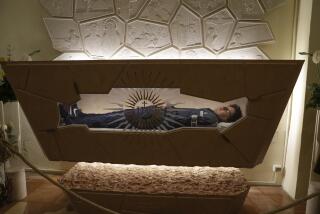NASA Designing Shuttle Escape System
NASA said Tuesday that the first post-Challenger space shuttle will have an escape hatch but that no decision has been made on the rocket assist necessary to eject the crew safely in an emergency.
The shuttle Discovery, scheduled to be launched next June, will be changed significantly from orbiters that flew before the Challenger explosion in January, 1986, said a report to President Reagan by NASA Administrator James C. Fletcher.
Twenty major changes have been made in the shuttles’ main engines to increase their operating life, safety and reliability, the ship will have a new re-entry heat protection system in the area where the wing joins the fuselage, the external fuel tank lines will be strengthened and the solid fuel rocket boosters will be redesigned, the report said.
The 191-page document sent to the White House is NASA’s report on how it has implemented the changes recommended by the Rogers Commission, which investigated the Challenger explosion and the deaths of the seven crew members.
One of the commission’s nine recommendations was that the National Aeronautics and Space Administration provide a crew escape system for level controlled flight. Astronauts have feared that if they ditch in the ocean during an emergency return, the ship would break up on impact.
“A final decision to implement a space shuttle crew escape system has not been made,” the report said. But, it added, “the jettisonable hatch modification has been approved and will be installed prior to the first flight.”
Such a system would not have saved the Challenger crew. NASA said it has a study under way to evaluate the feasibility of a method to use while the solid rockets are thrusting in the first two minutes of flight.
A major problem in designing any escape system is that it must ensure that crew members do not smash against the shuttle’s wing as soon as they leave the cabin.
NASA said it assessed several manual approaches for reducing that potential contact, including a “deployable tunnel” through which crew members would pass and an extendable rod or rope to guide an escaping astronaut.
Space agency officials also have been concentrating on other methods, including a system to use ejection seats, rocket-powered extraction of seated astronauts, a bail-out from the bottom and rocket-powered extraction through the side hatch.
More to Read
Start your day right
Sign up for Essential California for news, features and recommendations from the L.A. Times and beyond in your inbox six days a week.
You may occasionally receive promotional content from the Los Angeles Times.






